INTERNET KILLED THE SUBCULTURE
The death of third spaces and disruptions to our social interactions ultimately impact the formation and lifecycle of subcultures.
This is the entrance to La Bodega Negra in London’s Soho District. Which is a…yuppie Mexican restaurant.
Take a walk through London's Soho nightlife district today. You may pass by a few of the notorious walk-ups with signs advertising "models" and perhaps a few adult entertainment shops, but this is a meager cry from the district's history as one of the world's red-light districts. Yet you'd easily be able to find bars advertising "authentic red-light atmosphere" with LED strips and cocktails named after sex workers. Journalist, friend, and former housemate of mine, Frankie Miren, wrote about this phenomenon a decade ago for VICE. London's Soho has essentially become a brothel-themed open-air adult amusement park despite the vibrant culture of sex workers in the area being rooted out due to the high costs of living and the industry becoming more transient.
An aside: I have a larger theory that by looking at trends of how sex is sold, we can understand the wider economy(sex via pornography being one of the first things sold on the internet, AI companionship as one of the first major use cases for consumer AI, the list goes on).
Frankie's observation about Soho in the mid-2010s was apt, and additionally, a lot has changed with the ubiquity of subcultures, high cost of living, COVID, and how youth interact. Arguments about gentrification impacting artist cultures go back quite a way. Notably, Sharon Zukin's The Cultures of Cities (1995) documented the emergence of this pattern in New York.
However, I’d argue that this issue isn't purely a financial one, but also a reflection of how our socialization patterns have been fundamentally disrupted.
What is a subculture?
So let's initiate this discussion by establishing what a subculture is. A subculture's most defining piece is that it is sub, and transgresses against while coexisting within the context of the mainstream culture. Dick Hebdige's seminal Subculture: The Meaning of Style (1979) identified subcultures as spaces of resistance, where marginalized groups create alternative meaning systems through style, language, and spatial practice.
It’s important to remember that marginalization in the case of subcultures can be for sexual orientation, neurotype, age, socioeconomic class etc.
The shared interests that usually form subcultures are fashion, media (gaming/music/film/art) or ideology. Often these interests intersect with one another or one may be a dominant interest that gathers people but the other emerges from it.
Here are a few young people of Angola’s Goth scene - their music is influenced by 1970s British nuwave but their fashion is also influenced by this music and some of their own stylings as well.
Historically, subcultures required some physical infrastructure as IRL was the primary means of communication. Think of a grimy club that birthed niche new artists or the cheap apartment where artists can afford to experiment with one another, and so on all add value because they allow for people with novel affinities to gather and create a shared culture with one another. This physical infrastructure also typically leads to the development of a symbiosis between local economies, which either develop to cater to group members or are created by them.
To have and sustain this set-up, there must be a critical mass of people with these niche yet shared affinities to regularly keep this community alive. Hence, this is a phenomenon characteristic of urban areas.
Subculture lifecycles
Despite members who may claim that subcultures change due to sell outs or posers, it's usually because 1) members age out of the community and don’t have as much time to dedicate to the group 2) wider societal/cultural changes (and humans like novelty!)
We can see that the traditional model of subcultural development usually follows this:
Group of young people gather in a shared area due to some affinity (traditionally music, but other factors work) and create culture around this physical space, which accommodates and shapes them
The local economy caters to this physical presence, the two become symbiotically intertwined.
External capital notices step 2 and begins commodification which ultimately leads to the culture becoming a tourist attraction.
For example, consider Tokyo's Harajuku fashion subcultures, one of the few that can be assigned to a specific geographic place. Harajuku became internally iconic as high school Japanese girls became an arbitrator of all things cool in the early aughts. Visit Tokyo's Harajuku today and the district has essentially become a tourist attraction for visitors foreign and domestic alike. Many subculture community members complain that Western tourists are ruining the local vibe and some even refuse to attend the space due to being harassed or having their photos taken without consent which is a huge faux pas in Japanese society.
Yet something interesting persists in Harajuku that illuminates why this subculture(or the many subcultures that call Harajuku home) will never totally dissipate:
Many of the small boutiques selling unique fashion and adhering to this subculture don't sell clothing online and work symbiotically with local influencers.
Fashion shows, fashion meetups, events and the like in the scene remain intrinsically tied to the area itself.
Therefore, although the district has become something of a tourist attraction, it still remains a place for young Japanese people who are into alternative clothing to gather, albeit in a different form.
Something similar to Harajuku happened to London's Camden Town, formerly a punk rock stronghold, now home to tourist attractions and is somewhat of a caricature of its former self. You may be able to get a bootleg Ramones T-shirt from a vendor and proudly boast that you got it from the historic Camden Town market.
This commodification makes practical sense. People who want to make money, such as real estate investors, hotel marketers, and tour guides, further make the area "uncool" because spaces no longer remain underground and cease serving as a home for the tribe in question.
Contemporary Disruption
OK, so now that we’ve established that some disruption is pretty normal for subcultures, it’s time we explore how the new model of subculture creation (and commodification) ultimately impacts this lifecycle.
While high costs of living in major cities can be blamed for a lot of these changes(small experimental shops can no longer take the risks to have physical stores, people can’t afford to live in cities*) An exception to this may be Tokyo which has remained to have a very low cost of living for the industrialized world!
However, given this established trend of subculture death and the overall decline in industrialized nations having "third spaces" (Ray Oldenburg's concept of community gathering places beyond home and work) combined with a total disruption of socialization patterns due to the advent of social media, I predict the new model of subculture lifecycle will look fundamentally different:
Contemporary Subculture Lifecycle:
Group Connects over shared affinity and forms bonds in digital spaces (Typically via online) (The internet offers an infinite critical mass of people, no urban areas needed and the subculture can form/communicate instantly over social media platforms, Discord, TikTok, etc.)
Instant market attention (Platform algorithms, viral trends, influencer marketing, fast fashion all quickly serve as a reaction)
Simulacra ??? (The aesthetic gets packaged and sold before any culture fully forms, maybe IRL, but it is almost as a “meme” of the trend or some tertiary observation of it rather than being of it.)
Under this new model members of the group may not even meet or know each other in real life. They may not ever hear each other’s voices or see the other person’s real face. The infinite critical mass of the internet allows for more niche, specified and creative groups to form but this sort of splintering may also mean that the groups may become more sequestered away from mainstream culture. There is also more of an ephemeral nature to content on the internet, so we see subcultures as more of a consumer good, a simulacra rather than a culture.
On Tiktok, these are merely the “aesthetic” of the week. Take the “mob wife” trend - which is essentially young women cosplaying as the wives of fictional mob bosses. Essentially, some women tried it out and it got picked up by Tiktok’s algorithm and then it became the “aesthetic” being sold rather than being based on fans of the actual mafia. In this case, it’s even like a simulacra of a simulacra.
Japan’s cholo subculture is based on a “primary” subculture, which is actual Chicano people of Los Angeles. However, it still features the same typical features of “traditional” subcultures that were not usually birthed directly from the internet.
An interesting example of a subculture that didn’t begin with internet culture but has been ultimately shifted by it is Japan’s otaku culture. Consuming the materials of the subculture cannot be done without technology. Consider Tokyo's Akihabara, the “mecca” of Otaku, which began as a post-war black market for electronics, a place where tinkerers and outsiders could find rare components. Between the 1970s and the 2000s, the space became more synonymous with the "otaku" subculture. Technology peddlers found a market selling to fans of anime, video games, manga, cute girl idols and the like. As rare electronic components became easier to source online, their physical presence in Akihabara became increasingly rare. Therefore the market shifted from physical electronics to fan goods, which has also declined in recent years due to expanded online shopping. Now it's become a service-based economy centered on concept cafes, essentially young, beautiful women selling a simulacra of cosplay subculture to tourists and otaku. Because the actual subculture doesn’t produce many material goods(besides, again, some computer parts which may be sourced cheaply online or some items like figurines), the culture itself and the local economy have to shift their market to be purely a simulacra of the actual thing.
There were other random instances that contributed to Akihabara's transformation, such as a mass stabbing event in 2008 that dramatically impacted the emerging street culture there. Today, Akihabara primarily exists to service male fantasies at “concept cafes” - which says in its name, the main selling point is the “concept” of the cafe. They are usually small bars where girls in odd or niche cosplay outfits(like pirates, ninjas, shrine maidens etc) chat with patrons and stimulate anime culture because streaming has made it so you don’t really buy physical anime anymore.
Considering Baudrillard's actual concept of simulacra, we now live in an era where the copy precedes the original. Digital subcultures can be commodified before they fully develop physical infrastructure, creating what amounts to subcultures-as-aesthetic rather than subcultures-as-community.
What do these changes to subcultures mean?
Subcultures serve crucial social functions:
Social Laboratory: Subcultures offer spaces for experimenting with various ways of living, relating, and organizing society.
Political Resistance: Authentic subcultures often challenge dominant power structures in ways that commodified versions cannot.
Community Care: Subcultural spaces often provide mutual aid, a sense of belonging, and support for individuals marginalized by mainstream society.
When these functions don’t get a chance to actually form the absolute value, the sum they add also gets diminished. You can buy aesthetics, but that isn’t forming a shared community and the values of community will likely not be felt.



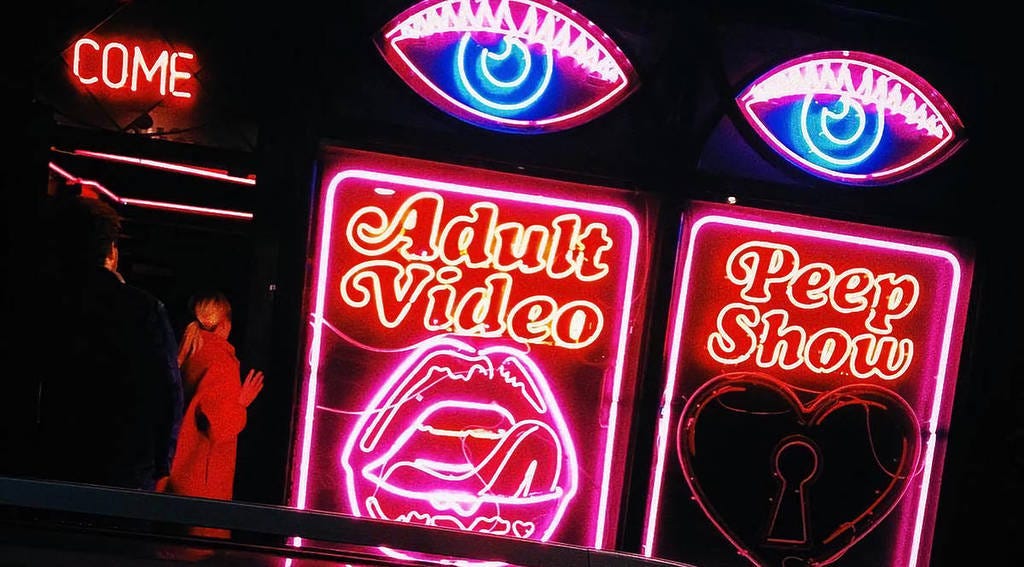
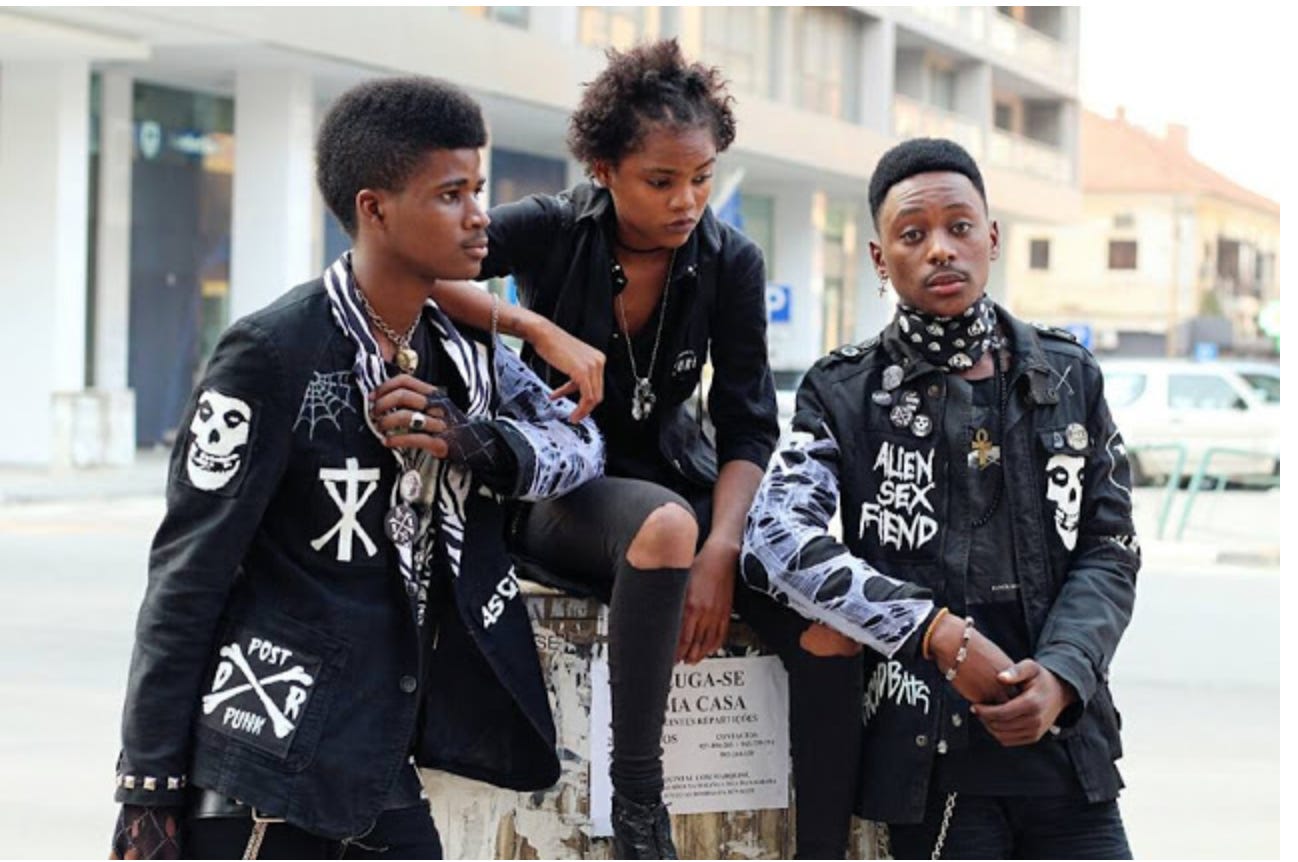
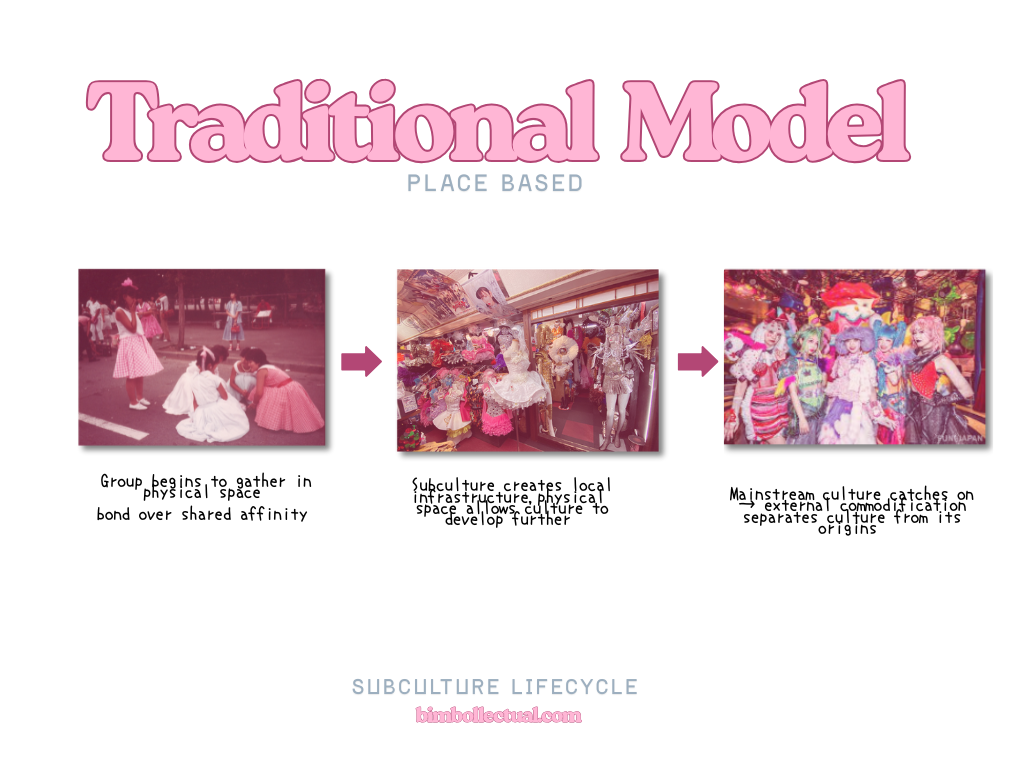
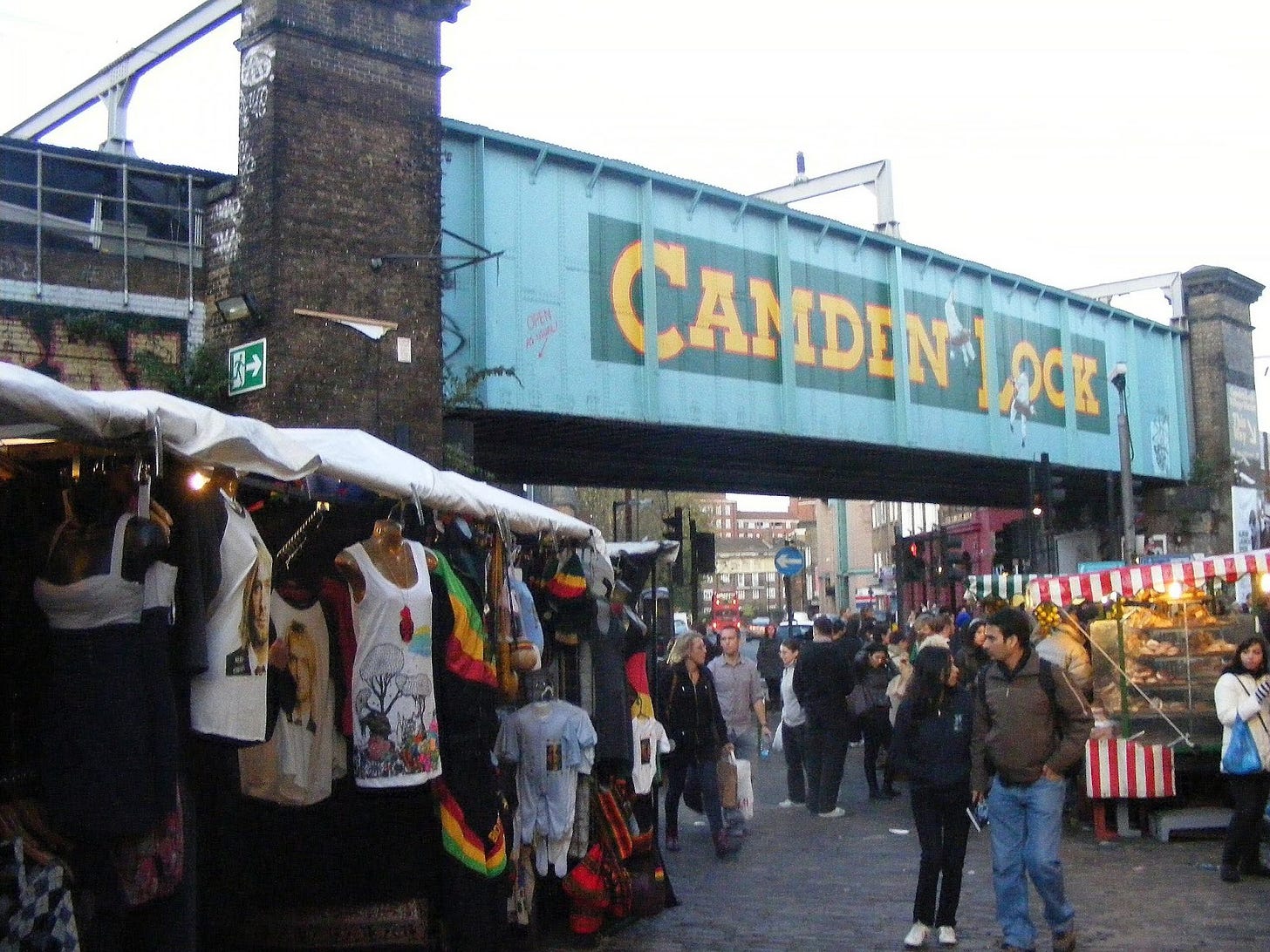
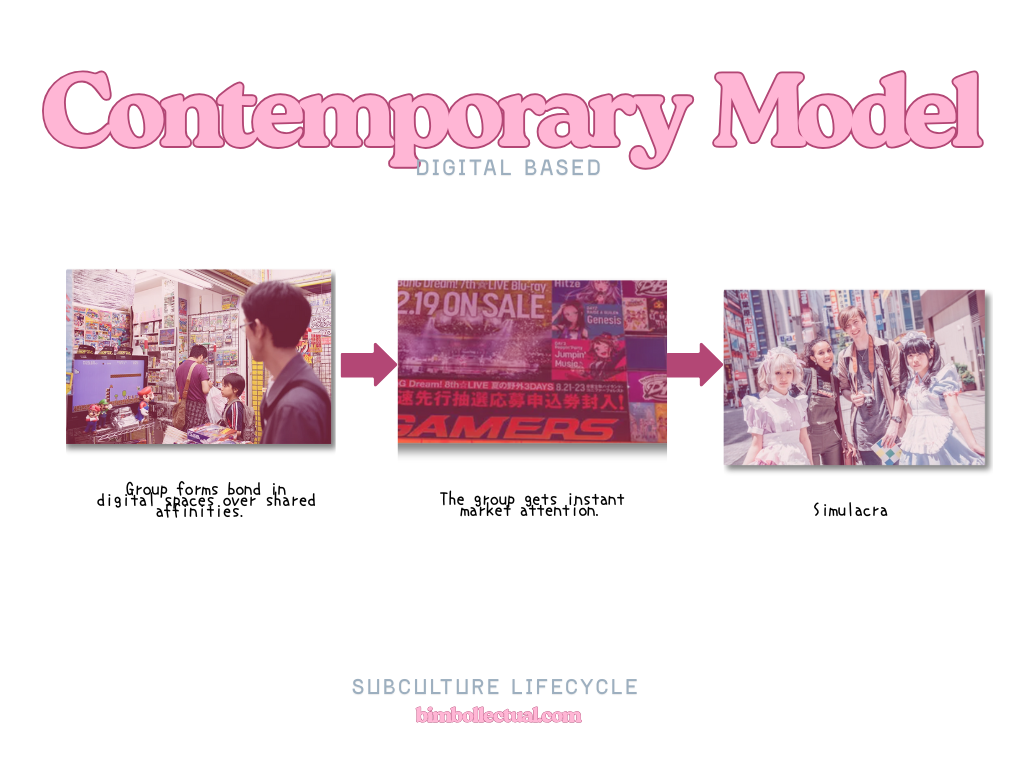
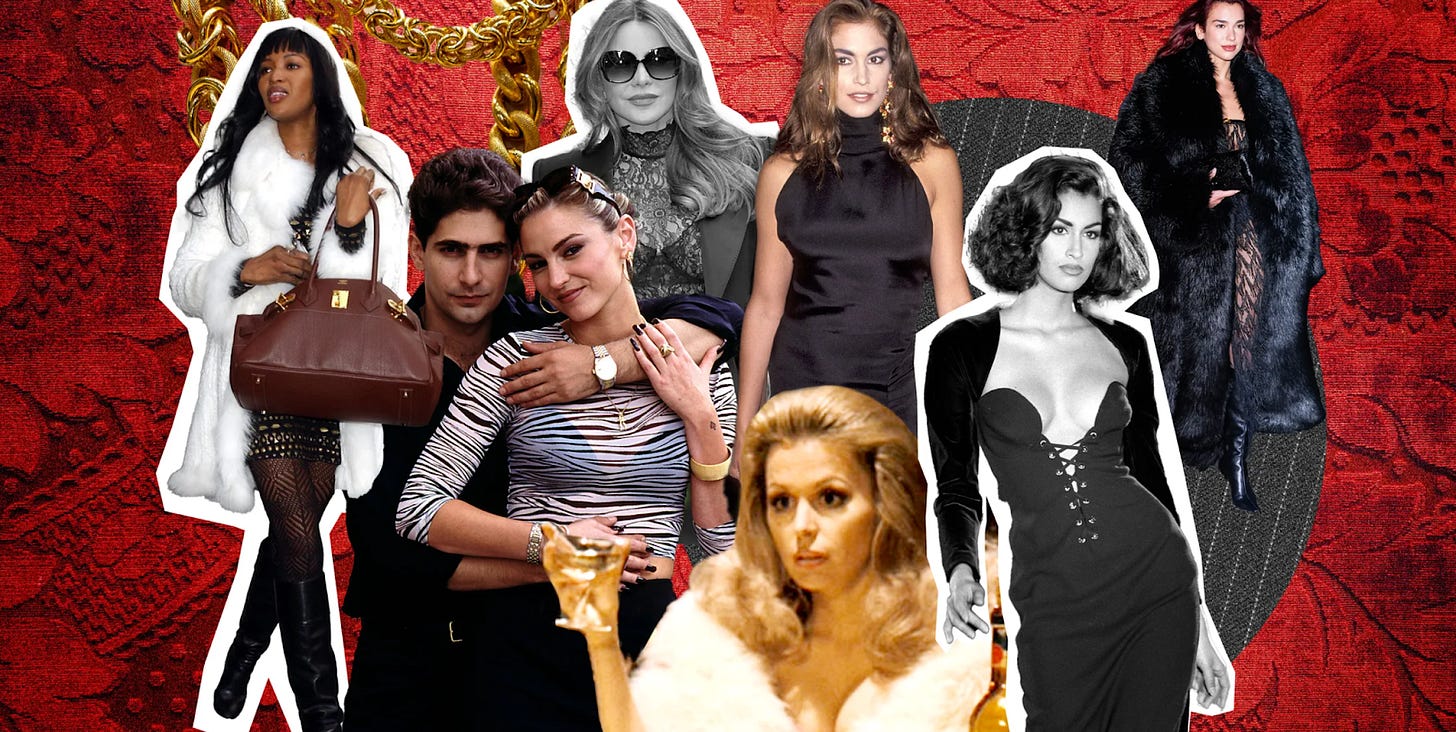
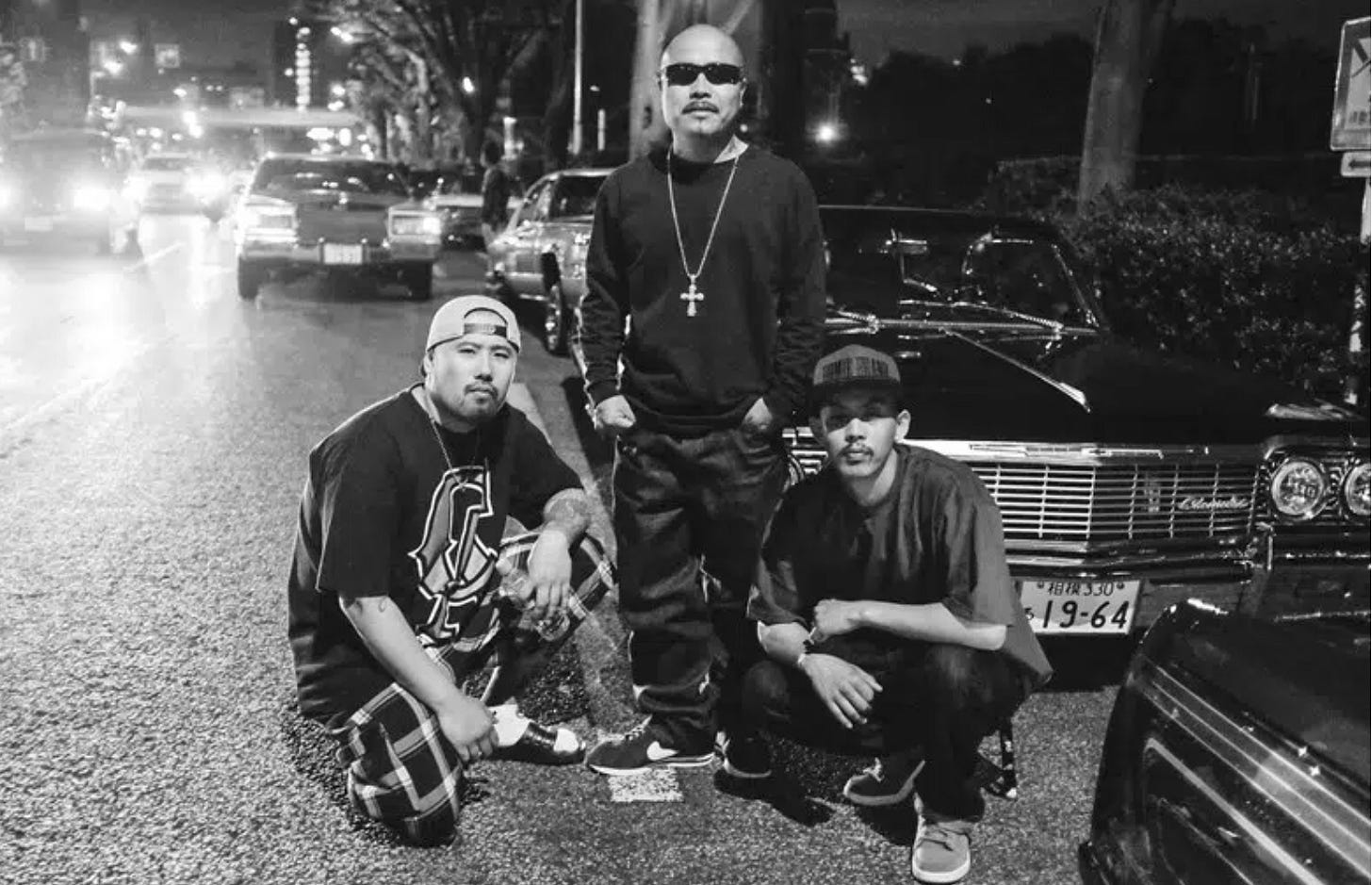

Soho does look like a cool place to visit though! I do like the idea of celebrating sex workers.
I agree there is a lot more commerce in subcultures and a lot less resistance overall in young people, but new real subcultures still happen, like the Toyoko kids. Maybe because it’s easier to gather in Tokyo than in other places, I guess. Also I am against gentrification and overall kabukicho also becomes more and more gimmicky and the bunch of new hotels don’t help, but I have to admit that as a landmark, the kabukicho tower is gorgeous.